What’s Up With Water – Chicago’s New Mayor, In Rare Move, Considers Water Shutoff Ban
I’m Eileen Wray-McCann for Circle of Blue. This is What’s Up with Water, your “need-to-know news” of the world’s water, made possible by support from people like you.
In India, monsoon rains have brought drought relief to southern and eastern parts of the country. Accuweather reported that, although the seasonal storms have been unusually slow to start this year, the monsoon has made a “noticeable advancement.” The monsoon was delayed in part by Cyclone Vayu, which disrupted weather patterns. The nearly 5 million residents of Chennai, who are enduring severe drought, saw their main reservoirs dry up. The monsoon is easing the stress, but it is behind schedule and moving slower than it has in decades. As of June 23, India’s rainfall is 38 percent below normal. Accuweather predicts that this season will be 10 percent drier than normal. And it advises that the coming weeks of rain will probably be too light to offer meaningful drought relief in Chennai, which depends on the end-of-year monsoon for most of its rain.
Elsewhere in India, the Madras high court in Tamil Nadu criticized authorities in Chennai for inaction in the lead-up to the city’s water crisis. Water shortages have plagued India’s sixth-largest city for weeks. While Tamil Nadu’s chief minister claimed that the media were overstating the water crisis, a leading government think tank suggested otherwise. It called for “urgent and improved” water management to respond to the worst water crisis in India’s history, and predicted that as early as next year, 21 cities could run out of groundwater.
In Iraq, Islamic State militants continue to deliberately torch fields, just as the country welcomes its first strong crop in years. Nineveh, in northern Iraq, is home to about half of the country’s cultivated land. Some 180 crop fires were reported between May 18 and June 11. So far, a relatively small proportion of crops have been burned, but officials warn the blazes could spread to storage sites.
Israel began construction on a fourth pipeline to carry water into the Gaza Strip. The pipeline is the largest yet and will provide increased drinking water to the territory. Israel and Hamas have reportedly held informal talks via third parties on restoring some of the area’s decaying water and sewer infrastructure. The systems are said to be verging on collapse in some places. Gaza’s sewage is sent directly into the Mediterranean Sea untreated, or into the streets, raising the fear of disease.
The Kariba Dam, the key source of power for Zambia and Zimbabwe, has fallen below 30 percent capacity. Zimbabwe’s energy minister warned that power production at the dam may be suspended in September if dry conditions persist. This time last year, the dam was nearly three times as full. Bloomberg News reported that Zimbabwe’s president recently met with his Mozambique counterpart and discussed the possibility of Mozambique sharing power from its Cahora Bassa hydropower dam, which is at 96% capacity.
Namibia plans to auction off hundreds of wild animals as water sources run dry in the country’s national parks. The southwestern African country is suffering its second drought in three years, and last month President Hage Geingob declared a state of emergency. Food and water sources in the country’s national parks are so poor that officials fear wildlife will starve. Some animals, including 600 buffaloes, 28 elephants, and 60 giraffes, will likely be sold to game farmers, who raise animals for hunting. The proceeds are intended for government wildlife conservation efforts.
Costa Rica has managed to keep its electricity production clean despite drought, but at a significant financial cost. During the last four years, the Central American nation has generated 95% of its domestic electricity from renewable sources. Last year, the majority came from hydropower. This year’s drought posed a challenge, but thanks to high wind generation and water restrictions at dams, some 97 percent of Costa Rica’s power came from renewables. The country is depending on clean energy in order to achieve its goal of net-zero carbon emissions by 2050. Energy experts noted that the investment needed for such a transformation has been huge and that debt levels have risen. Costa Rica’s main challenge, said one researcher, is not so much generating energy from renewable sources. The difficulty lies in finding a sustainable way to pay for it as climate change disrupts the predictability of weather.
A new United Nations report details water and sanitation across the globe. The UN analyzed water data from 2000-2017 and found that 2.2 billion people worldwide still lack steady access to clean water, and nearly twice that number do not have adequate sanitation services. At the same time, the report noted that 1.8 billion people have obtained access to clean water since 2000.
Spy satellite images have provided a startling new perspective on glacier loss in the Himalayas. Scientists took declassified U.S. spy satellite data from the mid 1970s and combined it with current satellite data and released a 40-year record of ice in the famed mountain range. The analysis shows that Himalayan glaciers are melting twice as fast since the turn of the century. The accelerating loss is described as devastating, and a profound threat to a water source for a billion people. The research shows that 8 billion tons of ice are disappearing each year, and not being replaced by snow. The leader of the research team, Joshua Maurer, from Columbia University, said “This is the clearest picture yet of how fast Himalayan glaciers are melting since 1975, and why.” The study was also clear about the cause: global warming, brought about by human activity.
In the United States:
Snowmelt has replenished the Colorado River, the Rio Grande, and other waterways in the Southwest. Several states, including Colorado, Utah, and Wyoming, recorded above-average snowfall this winter. The Rockies had their deepest snowpack in over 20 years, the Rio Grande swelled to such heights that it was closed to recreation in two Colorado counties. This was a dramatic shift for a river that, last year, posted one of its lowest years on record. The massive influx of water is a boon to residents, farmers, utilities and wildlife in the watershed. Experts say that long-term recovery would require years of similar snowfall, in order to refill reservoirs after extended drought. And they caution that this wet year could be a blip in a region that is getting drier. Reduced precipitation is tied to warmer temperatures, hastened by a disrupted climate.
Flooding in the Midwest is troubling fisheries downstream as surges of freshwater into the Mississippi River are overwhelming brackish estuaries and marshlands. The imbalance in water chemistry has killed oysters and forced crabs, shrimp, and fish into saltier waters. The flooding is decimating the regional fishing industry in Mississippi and Louisiana. There, oyster harvests are down by 80 percent, and shrimp catches are nearly as bad. The governors of the two states have asked the U.S. government to declare a federal fisheries disaster. One oyster farmer described the situation to U.S News and World Report, saying that on a ten-point scale, “we are 9-and-a-half destroyed.”
In Michigan, environmentalists and new Democratic leadership are continuing their efforts to shut down a controversial pipeline in the Great Lakes. The Line 5 oil pipeline system moves about 23 million gallons of crude oil and natural gas liquids each day. It runs beneath the Straits of Mackinac, the point where Lake Huron and Lake Michigan converge. Critics have long considered the 65-year-old pipelines an environmental disaster waiting to happen in a vital shipping channel and one of the world’s largest bodies of freshwater. The Canadian oil company Enbridge, says its aging pipeline needs replacement. It got approval to begin construction from former Michigan governor Rick Snyder, a Republican, as he was leaving office in January. In March, Democratic attorney general Dana Nessel issued a legal opinion saying the decision was unconstitutional, halting the replacement for now. Environmental groups and several Democratic lawmakers feel the replacement poses a major environmental threat to the Great Lakes. They accuse Enbridge of long-standing mismanagement, lax safety standards and a lack of accountability.
Circle of Blue reported on a rare move by Chicago’s new mayor, who wants to ban water shutoffs for residents.
Days before her inauguration last month as Chicago’s mayor, Lori Lightfoot made a forceful statement about her administration’s water policy. She declared that water is a basic human right, and said she would reassess city statutes for shutting off water service to households that fall behind on their bills.
A month later, the new administration is still developing its water shutoff policy. In the meantime, the Department of Water Management has a temporary moratorium on water shutoffs until new policy can be finalized.
Chicago’s water prices more than doubled since 2010. Rates soared 25 percent between 2011 and 2012, then rose 15 percent a year for the next three years during an infrastructure replacement campaign. In 2016, a city law that tied rate increases to inflation tamed rate growth. But the following year a surcharge was added to water and sewer bills. Water rates have become a pressure point, and the new city administration focused on water shutoffs as a natural target for action. They sit at “the intersection of environment, health, and equity issues.”
Shutoffs in Chicago were concentrated in poor and minority communities. An outright prohibition on residential water shutoffs, if that is what Chicago authorities resolve to do, would be an unusual outcome in the scope of American water utility policy. Aside from temporary moratoriums such as in Detroit several years ago, few cities have endorsed such an encompassing move.
Though complete bans are rare, partial prohibitions that restrict the use of shutoffs against certain customers or during specific times of year are in broader use. California state law, for one, does not allow a utility to shut off water to households having a medical waiver. East Bay Municipal Utility District, which provides water to 1.4 million people in Oakland, California, and neighboring cities, does not shut off water to apartments, duplexes, and other multi-family housing. The utility instead adds a lien to the property, which can then be transferred to the property tax bill.
The Philadelphia City Council prohibited water shutoffs in the colder months to prevent households that use a radiator from being denied heat during the winter.
The United Nations has elevated safe, clean drinking water to a human right, and California enshrined such a right in state law in 2012, obliging agencies to work toward that goal. At the same time, providing safe, clean drinking water costs money. Like cable or internet, it’s a service that requires payment.
Instead of resorting to shutoffs, utilities ought to look at expanding customer aid programs, argues Laura Feinstein, a water policy researcher at the Pacific Institute.
“An effective affordability program is a more nuanced way of addressing shutoffs,” she told Circle of Blue.
Even in this direction there are hurdles. Financially struggling utilities might have too many customers who would qualify for a bill subsidy to shoulder an assistance program on their own. California is considering a state-run program for this reason. In other cases, state laws may bar public utilities from subsidizing certain customers.
“Lawmakers have to target the right problem,” said Alexandra Campbell-Ferrari, who is executive director of the Center for Water Security and Cooperation. “Otherwise,” she continued, “you’re crippling utilities and endangering the safety of the infrastructure, and then no one gets safe water and sanitation.”
And that’s What’s Up With Water from Circle of Blue, which depends on your support for independent water news and analysis. Please visit circleofblue.org where you can make a difference through your tax-deductible donation.
Eileen Wray-McCann is a writer, director and narrator who co-founded Circle of Blue. During her 13 years at Interlochen Public Radio, a National Public Radio affiliate in Northern Michigan, Eileen produced and hosted regional and national programming. She’s won Telly Awards for her scriptwriting and documentary work, and her work with Circle of Blue follows many years of independent multimedia journalistic projects and a life-long love of the Great Lakes. She holds a BA and MA radio and television from the University of Detroit. Eileen is currently moonlighting as an audio archivist and enjoys traveling through time via sound.

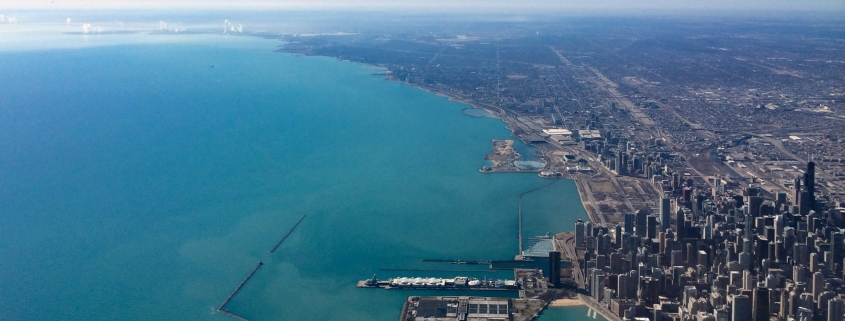

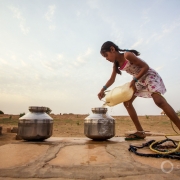
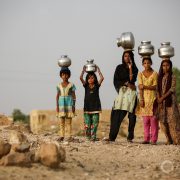
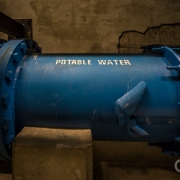
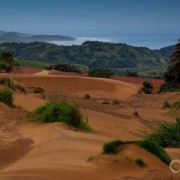



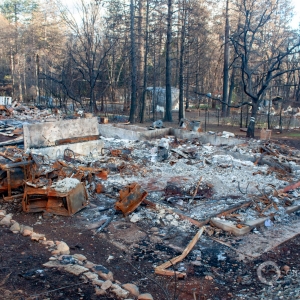
Leave a Reply
Want to join the discussion?Feel free to contribute!